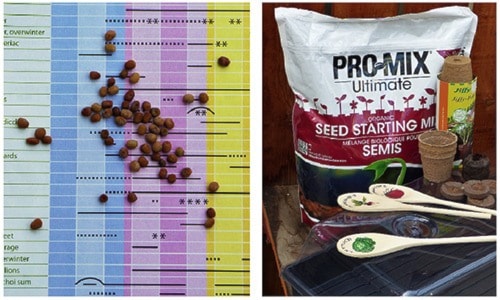In the depths of a dark winter’s day, when the caffeine buzz from too much coffee somewhat clouds your judgment and the glare of perfection leaps off the pages of the seed catalogue, it is easy to convince oneself that you should grow all of your plants this year.
It is almost like one of those New Year’s resolutions that you know will never be fulfilled the second you dare to utter it, and yet, some plants are easy to grow from seed.
There are, however, many pitfalls in the utopia of ‘growing your own’ but with a little guidance from gardeners such as myself (who have already made these mistakes) you can easily avoid the worst of them.
Start with a plan, and by that I mean an honest assessment of what you want to grow, when you want to start planting, and if you have enough room to accommodate your sprouting ambitions.
This is best achieved by consulting a local planting chart, one that indicates the month and best means (eg. direct sow or starting indoors) of sowing, as the first mistake most novices make is simply purchasing a vast array of seeds and starting them all at once indoors.
For vegetables, you can find an excellent planting chart in the front of the free West Coast Seeds catalogue, which also indicates our last average spring frost date, which is March 28 in the Lower Mainland.
Then you need your basic supplies, which include a sterile seedling soil mix and clean pots or trays to grow in.
Cleanliness and good drainage are important here, as the No. 1 problem when growing from seed is fungal diseases, which cause your newly sprouted seedlings to rot.
Often the culprit here is a heavy soil medium (unlike a seedling mix, which is light and porous) or reusing dirty containers – so at the very least, sterilize your recycled pots by scrubbing them and soaking in a 10 per cent bleach solution for at least 15 minutes.
You can also purchase clear tray lids with simple vents, which allow you to create a higher humidity that favours germination.
Two more options for those considering a serious foray into growing by seed include a bottom heating mat and a small grow-light system that often fits right over the standard 10 by 20-inch trays.
The heating mat warms the soil and accelerates germination and rooting, although I find the top of the refrigerator also provides the same consistent ambient warmth.
If you don’t have a bright indoor space, then a fluorescent grow light is essential, as newly germinated plants quickly get leggy while stretching towards any luminescence, making for tangled weakly-stemmed seedlings.
The grow light can be adjusted to hang just above the seedlings, regulating any excessive growth spurts and making for stronger plants with more rigid stems.
You should also recognize that not every seed needs to be started indoors, as most root crops (radish, carrot and turnip) prefer a direct-sow, as do beans and peas.
Vegetables worthy of starting inside include tomatoes (especially heirloom types, which can be difficult to purchase), peppers, celery, leeks and members of the brassica family (cabbage, cauliflower, Brussels sprouts and broccoli), which don’t mind a head start.
It is also nice to try something new each year and for the adventurous I suggest cucamelon (Melothria scabra) or asparagus pea (Lotus tetragonolobus).
As far as seed sources are concerned, the aforementioned West Coast Seeds is an excellent local supplier, while Vesey’s, William Dam Seeds and Richters are all reliable Canadian sources.
Mike Lascelle is a local nursery manager and gardening author
